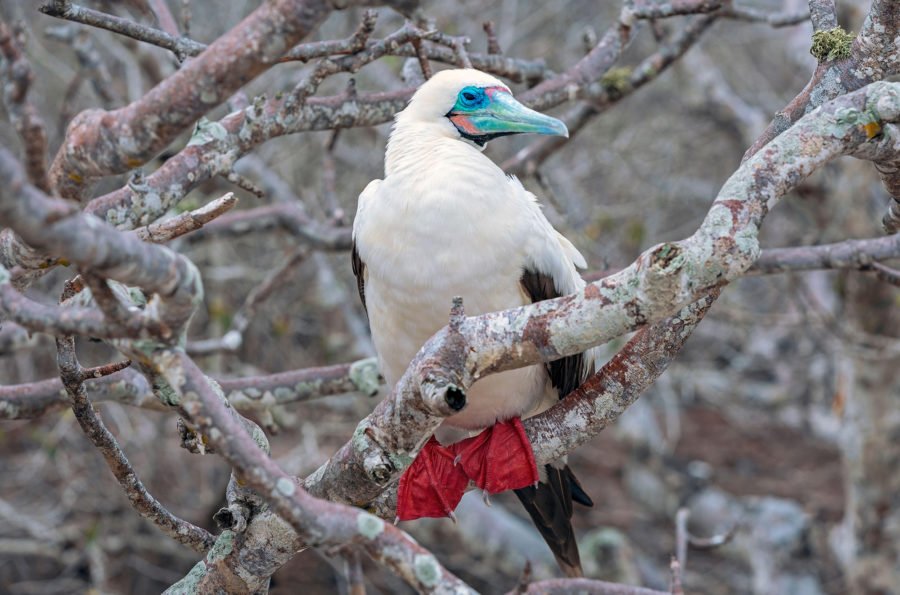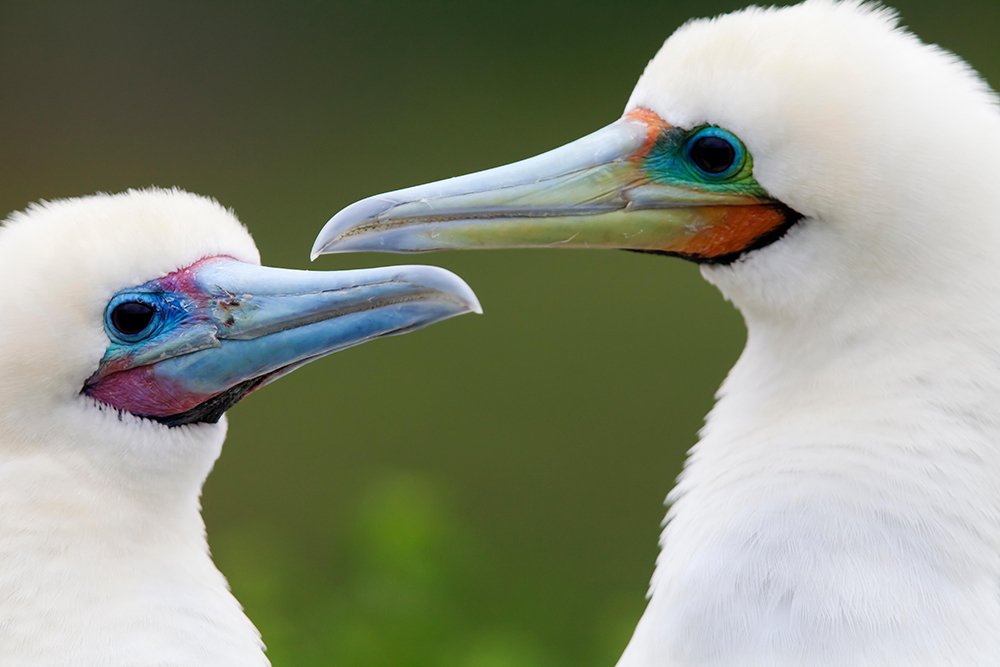The red-footed booby has a rainbow Paddle Pop beak

Bec Crew
Bec Crew

Th red-footed booby looks like it’s been ripped from the colouring book of someone who’s never seen a bird before.
A large seabird with a wide range throughout the Atlantic, Pacific, and Indian oceans, the red-footed booby (Sula sula) spends a great deal of its life at sea. But, unlike its better-known relative, the blue-footed booby (Sula nebouxii), it also likes to spend time in trees, where it builds its nests and tends to its young.
Those big red webbed feet don’t make manoeuvring across tree branches easy – it’s a rather awkward affair, and really does play into the booby’s name, which is thought to come from the Spanish term bobo, which means ‘fool’ or ‘clown’.
These birds can grow to about 70 cm long, and have a wingspan of more than 150 cm. It’s an impressive size, but the red-footed booby is the smallest the member of the booby and gannet family (Sulidae). The blue-footed booby, by comparison, is 90 cm long.
Red-footed boobies have been sighted all the way down Australia’s east coast. Christmas Island is one of the most important breeding grounds – it houses an estimated 12,000 breeding pairs, split into several large colonies.
On the Galápagos Islands, there are roughly 100,000 ‘red-foots’, along with smaller populations of blue-footed and Nazca boobies (Sula granti).
What’s fascinating about the red-footed boobies is their polymorphism – the species has several different colour morphs. As adults, they come in white, brown, and white-tailed brown varieties.
The bird pictured above is the white morph, and here’s a brown one:

Even their beaks come in different colour combinations, as these two white adults are showcasing beautifully:

While red-footed boobies have gained the reputation as being the most ‘stand-offish’ of the three species found in the Galápagos, they can still be unusually friendly, by wild bird standards.
Here’s one making a whole bunch of new friends:



